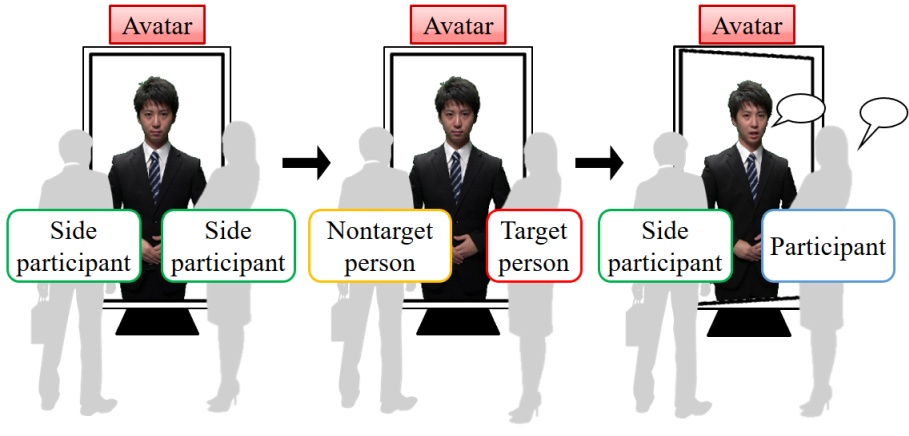Directing a Target Person among Multiple Users using the Motion Effects of an Image-Based Avatar

[Abstract]
We investigate whether an image-based avatar with motion can smoothly direct a target person who has requested guidance. Existing methods that use an avatar generally assume a one-to-one interaction with the user and did not fully consider how the avatar should direct a target person, which is important in interactions with multiple users. When the target person feels that the image-based avatar is facing them and feels that the avatar is directing them, the person judges that the requested guidance has been given. When a nontarget person feels that the image-based avatar is not facing them and also feels that the avatar is not directed towards them, the nontarget person then judges that the requested guidance has not come to them. To direct the target person smoothly, the action-type motion of the image-based avatar and the rotational motion of the video sequence itself relative to the display are important. We performed a subjective assessment of how the target person and the nontarget person feel about the direction by comparing the case where motions were added with the case where motions were not added. The results show that the image-based avatar with the action-type and rotation-type motions is effective for the target person but is not effective for the nontarget person.
[Publications]
- Tsubasa Miyauchi, Masashi Nishiyama, Yoshio Iwai,
Directing a Target Person among Multiple Users using the Motion Effects of an Image-based Avatar,
Proceedings of 21st International Conference on Human-Computer Interaction (HCII), vol. 3, pp. 341 - 352, July 2019.
- Tsubasa Miyauchi, Wataru Ganaha, Masashi Nishiyama, Yoshio Iwai,
Investigation of Motion Video Enhancement for Image-based Avatars on Small Displays,
Proceedings of 23rd International Conference on Human-Computer Interaction (HCII), LNCS 12763, pp. 44 - 55, July 2021.
[Publication (Japanese) ]
[Short movie]
